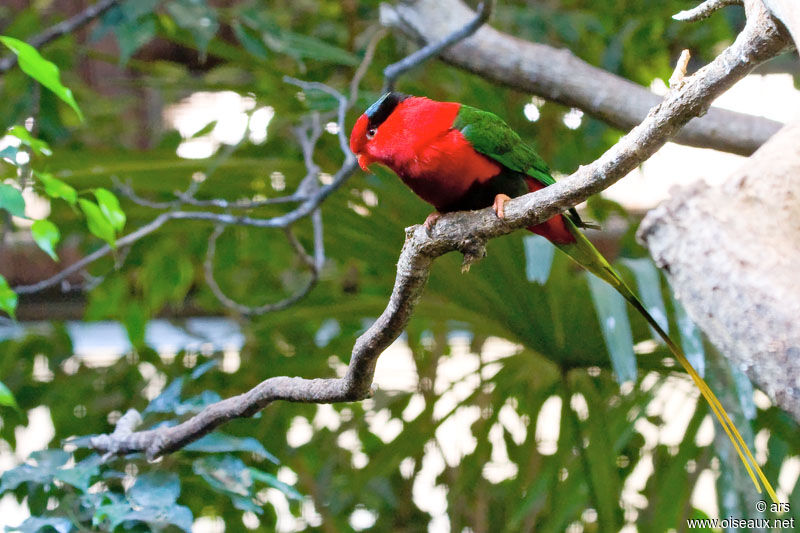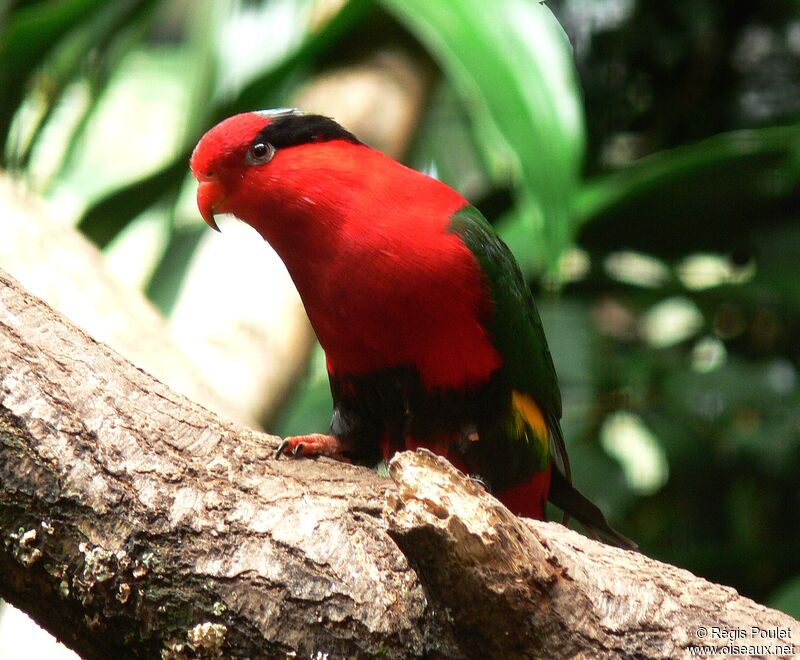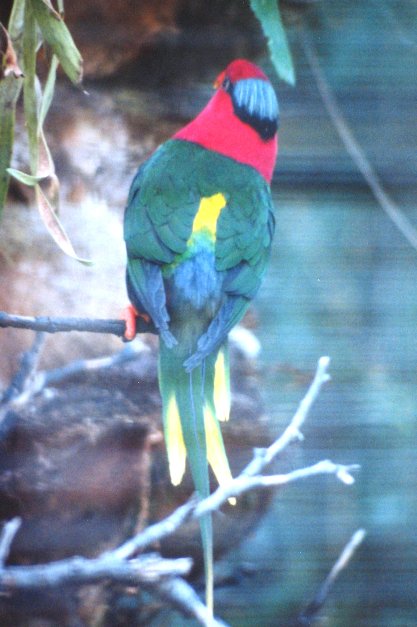Papuan Lorikeet
Mount Goliath Papualori
The Papualori ( Charmosyna papou ) is a parrot from New Guinea. The birds live in mountain forests at altitudes of 1500-2800 meters. In some areas, they are also found from heights of 1200 meters, on Irian Jaya, there are deposits at altitudes of 3900 meters. In the habitat of Papualoris there is a temperature difference of up to 20 ° C between day and night.
Features
There are four subspecies. The nominate the Papualori ( Charmosyna papou papou ) ( Scopoli, 1786) is native to the mountains of the Vogelkop Peninsula. It is colored dark red. The crest is black, blue at the beginning, in the neck, there is another black spot that has the shape of a crescent. Wings and back are dark green, the abdomen below the middle and leg feathers are black. The tail is bright green, iris, orange beak and feet.
Juveniles are colored matt total. Their feathers on the neck and chest are outlined in black, the black feathers on the belly have blue-green margins. Iris, bill and feet are brown. The tail and the primaries are shorter.
Other recognized subspecies are:
- Steller Papualori ( Charmosyna papou stellae ) AB Meyer, 1886, lives in the mountains south-east of New Guinea.
- Mount Goliath Papualori ( Charmosyna papou goliathina ) Rothschild & Hartert, 1911, occurs in the mountains of western New Guinea to Eastern Highlands Province.
- Delusion Papualori ( Charmosyna papou wahnesi ) Rothschild, 1906, from the mountains of the Huon Peninsula and the Adelbert Mountains in the province of Madang.
Of the latter three subspecies exist in the wild melanistic color morphs, in which most of plumage red upper parts are black. Only the flanks, lower back, and the under tail-coverts still have their original red color. In the females of the three subspecies of the lower flank area and the lower back are yellow.
Way of life
Papualoris live in pairs or in small groups and talk to forage mostly in flowering trees on. They feed on nectar, pollen, flowers, buds, fruits and small seeds. You may also take insects and their larvae to himself. Little is known about the propagation of the species. Breeding colonies in the wild have been observed in October and November. The eggs of captive specimens had the size of 24 - 25 x 22 - 22,5 mm. How many parrots are cavity nesters animals. The further propagation behavior of Papualoris is only known from captivity breeding. Usually two, sometimes only one egg is laid. The chicks hatch after 28 days, open at the age of ten days, the eyes and leave after 56 to 64 days the nest. Three weeks after leaving the nest the young birds are self-employed.
In their range they are often, in some areas there is a slight population decline, which goes back to catch birds or the destruction of their habitat.









